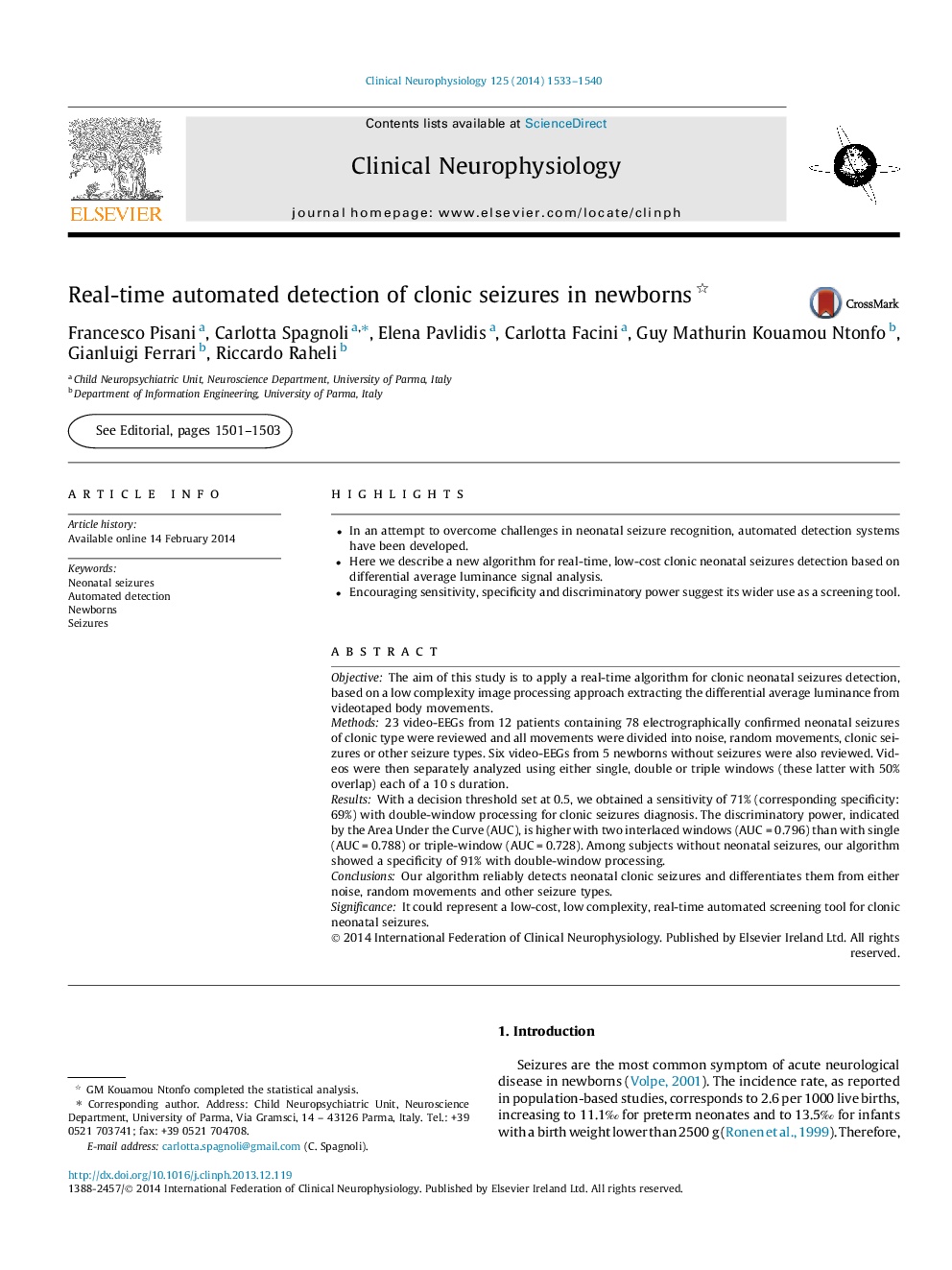| Article ID | Journal | Published Year | Pages | File Type |
|---|---|---|---|---|
| 3043480 | Clinical Neurophysiology | 2014 | 8 Pages |
•In an attempt to overcome challenges in neonatal seizure recognition, automated detection systems have been developed.•Here we describe a new algorithm for real-time, low-cost clonic neonatal seizures detection based on differential average luminance signal analysis.•Encouraging sensitivity, specificity and discriminatory power suggest its wider use as a screening tool.
ObjectiveThe aim of this study is to apply a real-time algorithm for clonic neonatal seizures detection, based on a low complexity image processing approach extracting the differential average luminance from videotaped body movements.Methods23 video-EEGs from 12 patients containing 78 electrographically confirmed neonatal seizures of clonic type were reviewed and all movements were divided into noise, random movements, clonic seizures or other seizure types. Six video-EEGs from 5 newborns without seizures were also reviewed. Videos were then separately analyzed using either single, double or triple windows (these latter with 50% overlap) each of a 10 s duration.ResultsWith a decision threshold set at 0.5, we obtained a sensitivity of 71% (corresponding specificity: 69%) with double-window processing for clonic seizures diagnosis. The discriminatory power, indicated by the Area Under the Curve (AUC), is higher with two interlaced windows (AUC = 0.796) than with single (AUC = 0.788) or triple-window (AUC = 0.728). Among subjects without neonatal seizures, our algorithm showed a specificity of 91% with double-window processing.ConclusionsOur algorithm reliably detects neonatal clonic seizures and differentiates them from either noise, random movements and other seizure types.SignificanceIt could represent a low-cost, low complexity, real-time automated screening tool for clonic neonatal seizures.
